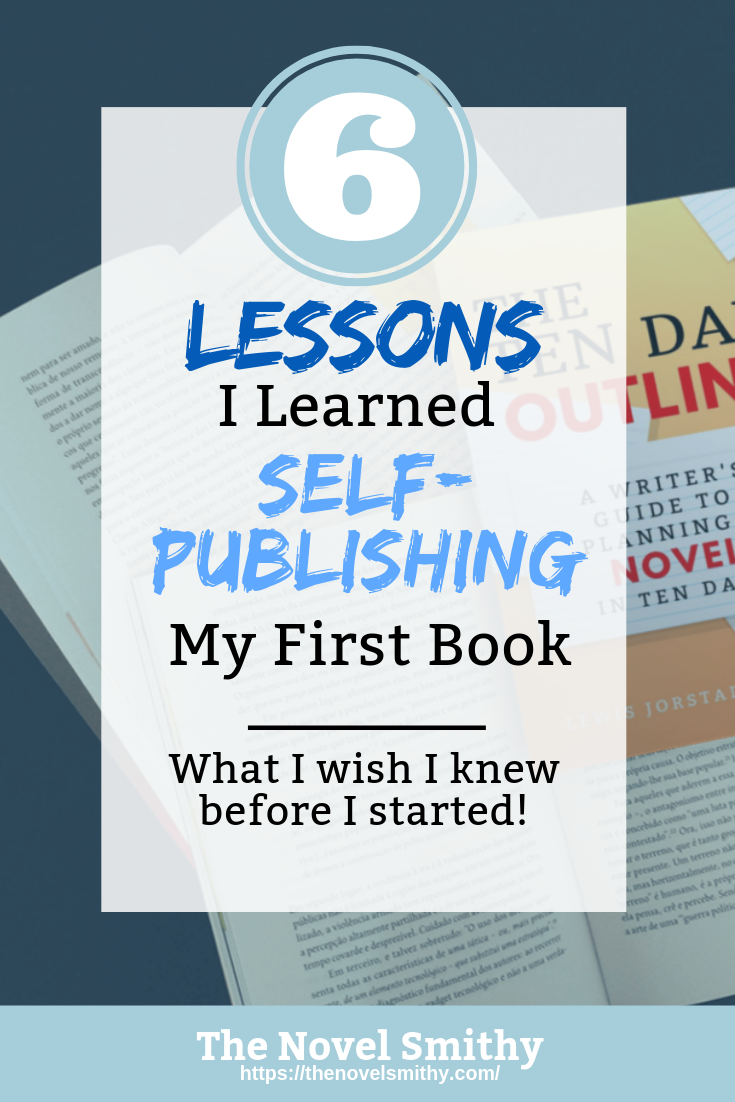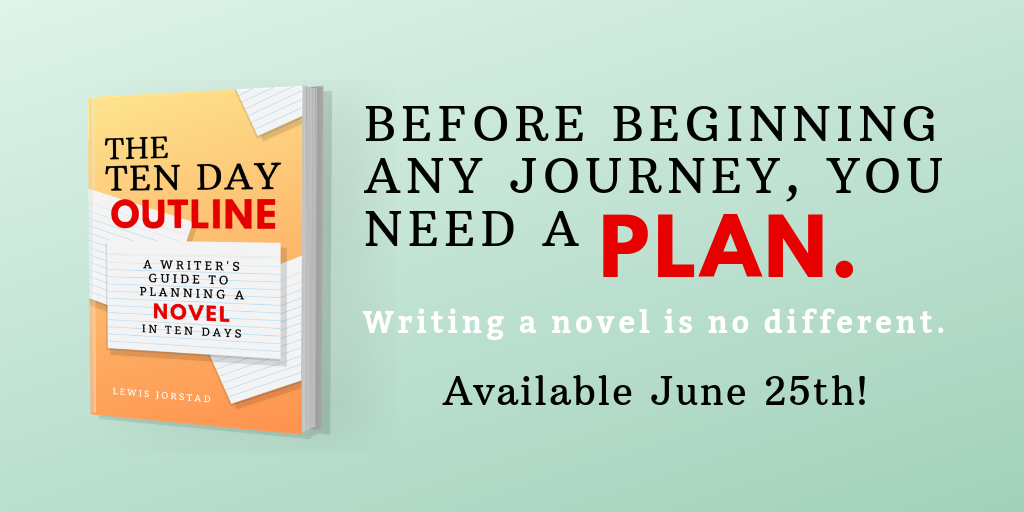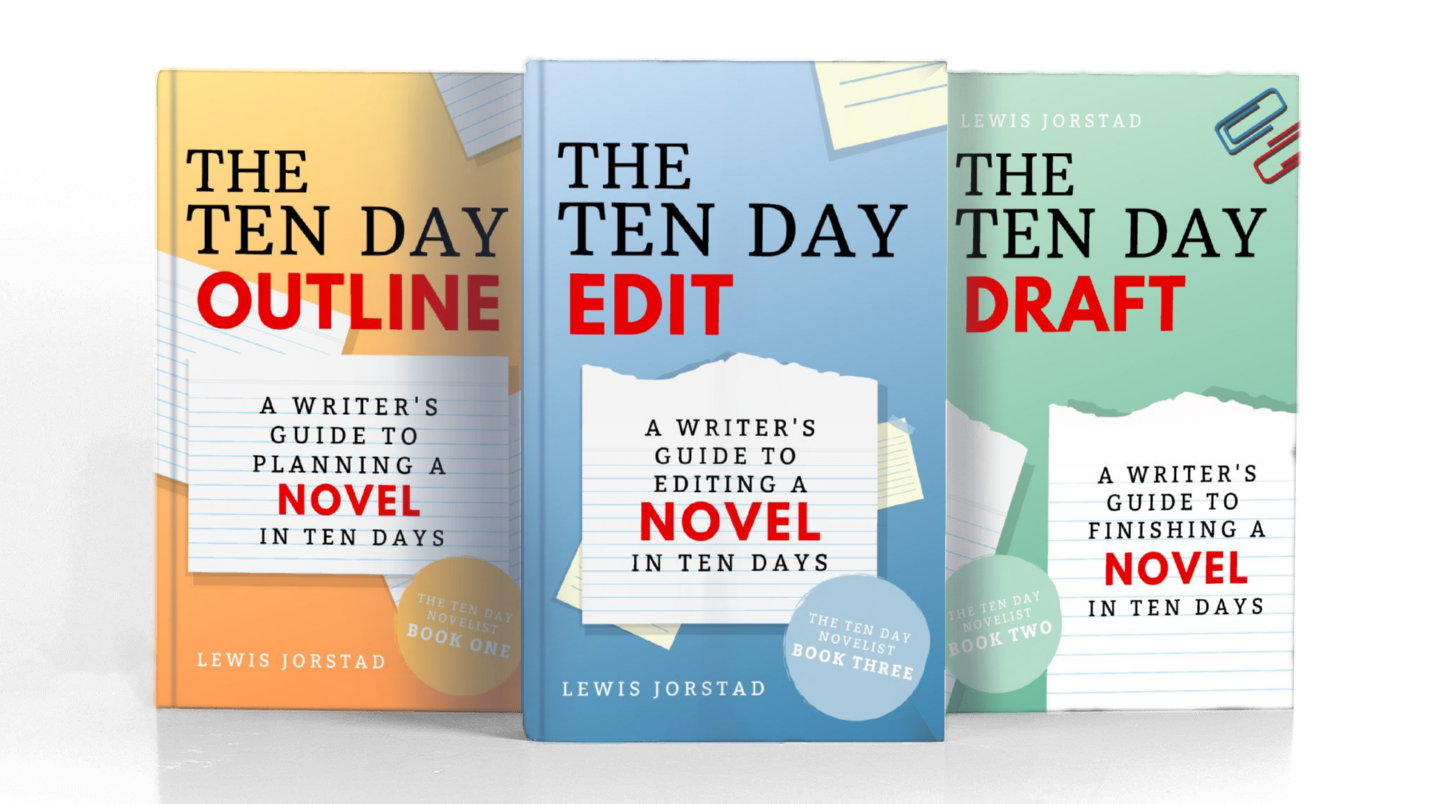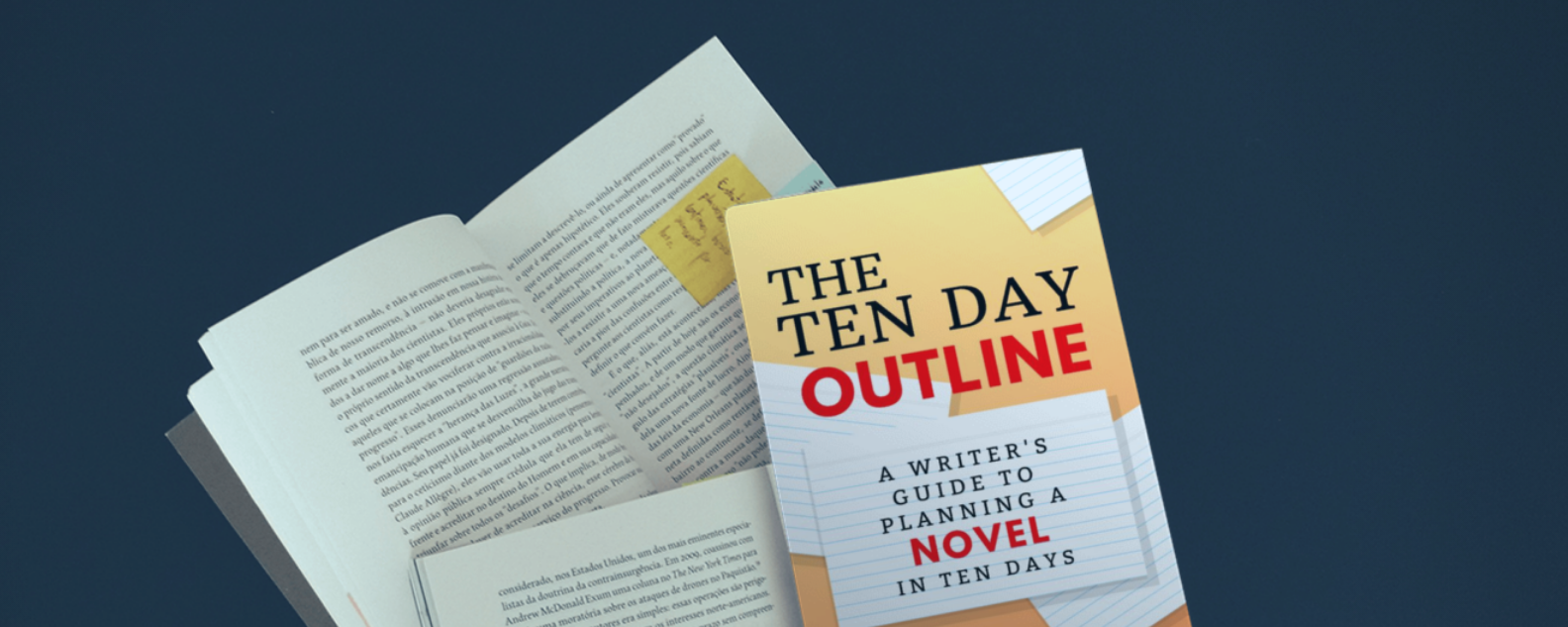6 Lessons I Learned Self-Publishing My First Non-Fiction Book
It’s been a week since I self-published my first book.
After four months of work, I finally sent The Ten Day Outline into the world, giving me some much-needed time to rest and reflect. I’m so tremendously proud of the book I’ve created, but there are also things I wish I had done differently—or knew I needed to do in the first place.
Self-publishing is a complex topic, and the list of “things to-do” can seem never ending. This post is by no means an exhaustive analysis of everything you should do when self-publishing your novel—or non-fiction book in my case—but it is a look at the six things I wish I knew before self-publishing mine.
My First Self-Publishing Journey
Contents
Late 2018:
 My plan to self-publish The Ten Day Outline began last year, in November 2018.
My plan to self-publish The Ten Day Outline began last year, in November 2018.
I had been working on this site for a few months by then and was accumulating more and more topics I wanted to write articles about.
However, I kept running into a problem.
The Novel Smithy’s articles simply weren’t long enough for some of the ideas I wanted to explore.
Writing a book seemed like the best solution, so I sat down and created an outline based on four different ideas, one of which would eventually become The Ten Day Outline. I was pretty excited and hammered out around twenty thousand words over the next two weeks.
Early 2019:
I didn’t really touch the project again until after the New Year, and when I returned to it, I wasn’t too pleased.
With a healthy distance from my original excitement, I realized the draft I created back in November wasn’t very good. My ideas weren’t fully formed, and I knew the process I was trying to create could be much better.
I needed to test this process, so I tasked myself with outlining three novels during the month of February. While the Ten Day Outline is all about teaching writers to outline their novel in only ten days, I didn’t have the benefit of a completed process to work from—I spent a lot of that time trying different steps over and over until my three outlines turned out the way I wanted.
While I ended up pushing back my deadline to mid-March, the end result was fantastic. I had a process that was rock-solid, along with more than enough notes for creating my book.
At that point, it was time to get writing again.
March 2019:
Much like my first attempt, I was back to being very excited about this project. As a result, I didn’t have too much trouble writing the first draft by the end of March, and the final product was in much better shape.
Still, it would need some revisions before it was truly ready.
April 2019:
It was at this point that I decided the book would launch by the end of June.
July 1st was The Novel Smithy’s anniversary, so I wanted to self-publish The Ten Day Outline before the site turned two. At the time, this didn’t seem like such a crazy goal—though I would soon realize I had a lot more work ahead of me than I thought.
April was all about revisions, and I ended up cutting and rewriting quite a few sections from my March draft. Looking back, all of those sections were ones I kept from my original attempt back in 2018 and most were ones I knew I should have cut in the first place. However, it was hard to give up on the words I had already written. I stubbornly kicked the can down the road, leading to more work that soon spilled into May.
May 2019:
It was here that I started to get nervous about reaching my goals. I still hadn’t sent my draft out for feedback, and I had a few more chapters left to revise. I put myself into overdrive, worked some pretty absurd hours, and managed to pull everything together in order to get the draft to my beta readers on time.
While I waited for their thoughts, I took a much needed break.
Just like earlier in the year, I knew I needed some distance from this draft before I could look at it objectively and truly deem it ready for publication.
June 2019:
June was where things got intense.
With edits complete and the draft ready to go, I realized I had a lot of work left to do. I designed and created The Ten Day Outline’s cover and spent a marathon 14 hours formatting my ebook and print files. Then I wrote a copyright page, set up my ISBN, navigated Amazon’s unintuitive KDP platforms, and finally put the book up for preorder two weeks before launch.
My work wasn’t finished though. There were emails to write and articles to create, and many other things I didn’t know I needed to do until something broke, ending with quite a few emails to Amazon’s author support.

In the end, the book launched without a hitch on June 25th, becoming the #4 bestseller in the genre fiction writing category on Amazon!
I was and still am blown away by how well it did—far beyond what I had hoped for. It’s clear to see that all those long nights were well worth it.
The Lessons I Learned Self-Publishing My First Book
Outline, Outline, Outline:
While it may seem silly to recommend outlining your book while writing a post-mortem about a book on outlining, well…
It really is the best thing you can do for your writing!
However, what you may not realize is that a solid outline will serve you well beyond just writing your manuscript. Self-publishing requires a lot of time spent on back-end tasks like writing author biographies, back matter, tables of contents, emails, and promotions. By having a solid outline covering both the content of your book as well your guiding ideas, you save yourself a lot of time later.
Understanding what your book is about makes creating a consistent message that much easier, which ultimately benefits both you and your readers.
Scrap Things If You Have To:
As much as it hurts to throw away work you’ve already done, sometimes it’s the best thing you can do for your book.
Just like I held on to parts of my original draft for far too long, it’s easy to grow attached to the various elements you create while self-publishing. Your book’s cover, description, or messaging may seem small on their own, but if they aren’t at their best, they’ll drag your book down as a whole. The time spent trying to force these elements to work is wasted time, no matter how much you don’t want to scrap them.
Seek Help:
I could not have self-published my book if it wasn’t for internet forums.
Not only was the advice of these other authors invaluable, but it was comforting. Here were hundreds of people struggling with the same technical glitches and confusing publishing requirements I was, yet they all made it through. This doesn’t stop at Googling how to register an ISBN or apply for copyright though—there are tons of ways others can support your self-publishing adventure.

Whether you enlist beta readers to help you stress test your ideas, hire a professional editor to make sure your manuscript is at its best, or work with a cover designer, you can and should seek out help while self-publishing your book.
Trust Your DIY Skills:
While you should be honest with yourself about what you can and can’t do—not everyone is up to designing a professional cover after all, and you should always work with a professional editor if you can—you’d be surprised by just how much you can DIY.
A lot of this will come down to budget versus time. Can you afford to pay a professional formatter $100 to create ebook files for you, and $100 more for print files? If you can, that’s awesome! However, if you don’t have the money to spend, there are ways to do it yourself. Same goes for cover design, legal issues, promotion, and distribution.
Again, be honest with yourself.
How much time do you have for trial and error? What are the end results you’re looking for? Of course, if you don’t have a large budget to work with, that shouldn’t hold you back. Here are some of the tools I used to keep my costs as low as possible:
- Scrivener for exporting files.
- ProWritingAid for proofreading. (this is an affiliate link)
- Vellum for formatting.
- Canva for cover design.
Don’t Set Strict Deadlines:
This is a hard one for me to admit. I’m a huge fan of setting deadlines, and I keep an extensive editorial calendar both for the articles on this site and for my personal projects. Deadlines are motivating and a great way to keep yourself from falling off the wagon.
However, just like I talk about in the last chapter of The Ten Day Outline itself, sometimes deadlines can get too intense.
There’s a big learning curve when self-publishing your first book, so it stands to reason that things will take longer than you expect—at least that was my experience. Do yourself a favor upfront and, at least for your first time self-publishing, give yourself plenty of wiggle room. If you think something will take a week, give yourself two weeks. You’re still making progress, and if you finish early, that’s all the better.
Celebrate every achievement, but build in some extra time for when things don’t go as planned.
It’ll Never Be Perfect:
Finally, we circle around to the big question: If I run a website teaching others to write fiction, why is my first published book not a novel?
Well, fiction is my passion. I’m a huge perfectionist when writing my novels, but thanks to this website I’ve learned to be forgiving when writing non-fiction. When I have to get an article out on time, I don’t have the luxury of rewriting it over and over until it’s perfect—I have to accept it for what it is. Publishing this non-fiction book was the same way.
It’s been a process, but I’m slowly learning to grow past my perfectionism. Hopefully when I publish the first book in my Sunrise Council series later this year I’ll have more advice to share on that topic, but that’s for another article down the road.
The moral of the story is—perfectionism isn’t helping you.

There will always be a voice in the back of your head that thinks your writing is bad, and not just bad, but awful. Literal trash. Not worth seeing the light of day. You get the picture.
This voice isn’t your friend.
At the end of the day, you have to develop ways to be objective about your writing. Decide for yourself what flaws you’re willing to tolerate and which you aren’t. I know my prose in The Ten Day Outline isn’t perfect, but I can forgive that because I also know the process I’m teaching is well-researched, thorough, and rock-solid. If I gave into perfectionism, I wouldn’t have become a published author a week ago, and all the awesome readers who have already started putting my outlining method to use would never have gotten that chance.
It’s better to publish an imperfect book than publish nothing at all.
My Thoughts on Self-Publishing The Ten Day Outline
In the end, while it’s been a marathon few months, I don’t know if I’d have it any other way—it’s exhilarating to finally hold this book in my hands!
UPDATE: Since this post went live, I’ve turned this book into a series! You can find it here.

Hopefully these post-mortems will become a tradition for each book I publish, but I guess there’s no way to know for sure until November when the next book in the Ten Day series releases! And yes, I just let that slip—a great way to motivate yourself is to have a few thousand people holding you to your deadlines, after all. 😉


Yes, I’m hoping to write a dystopian romance novel in the future but have no idea on how to get started, how to publish, how to copy write, how to establish an ISBN, etc. do I need a website?
Hi Jennifer,
Yes, I would strongly encourage you to create an author website if you plan to make writing novels part of your career. I don’t have a ton of resources on self-publishing and marketing on the blog currently, but you can check out some of the excellent stuff Joanna Penn puts out for more information: https://www.thecreativepenn.com/publishing/
I hope that helps! 🙂